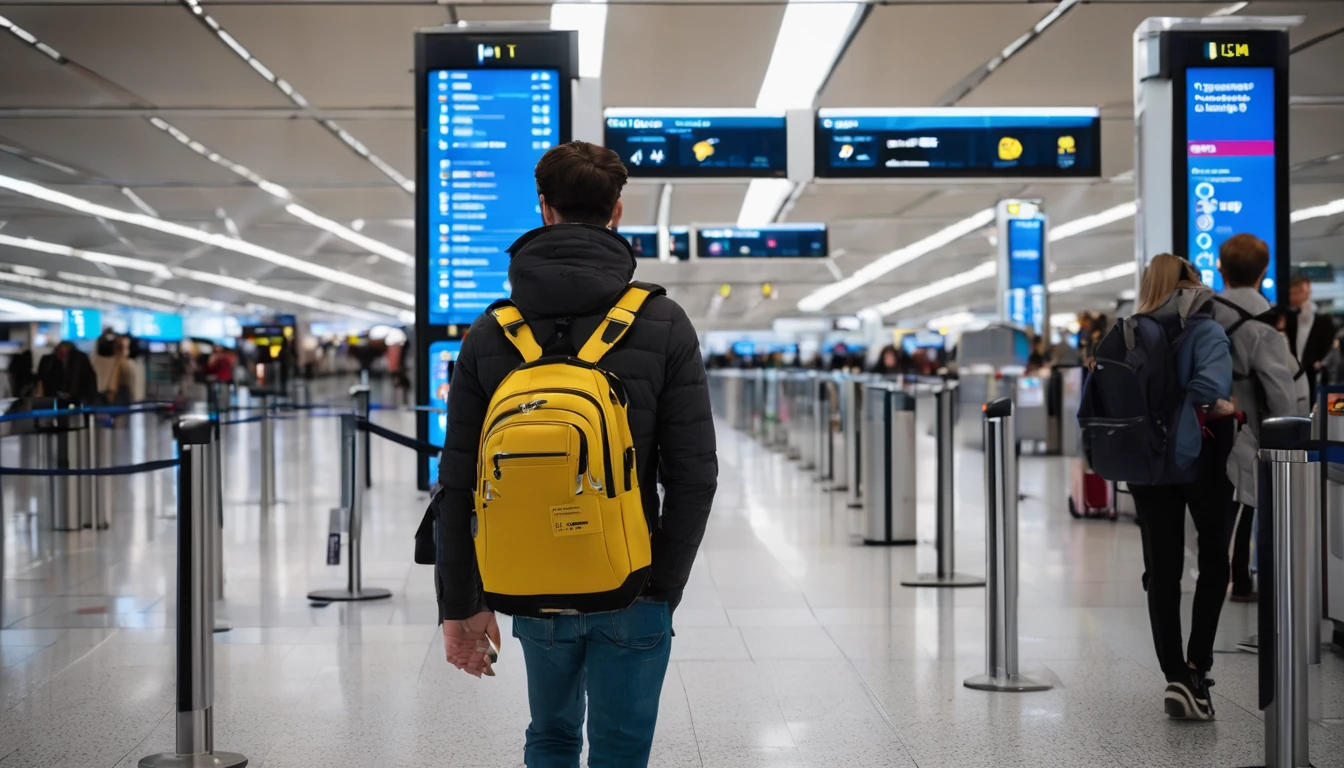Planning a UK trip in 2025? An eSIM is the fastest, most reliable way to get online the moment you land at Heathrow (LHR) or Gatwick (LGW). This guide cuts through the noise: what to buy, how to activate in minutes, where 5G actually works, and fair‑use rules that can catch travellers out. UK operators have largely switched off 3G, so you’ll rely on 4G/5G for data and VoLTE for calls. With a travel eSIM, you’ll keep your home SIM for texts and banking codes while using local‑rate data for maps, ride‑hailing and streaming. If you’re also heading into Europe, there are multi‑country options that save you swapping plans at every border.
Below, you’ll find best‑fit plan advice, airport steps that just work, and practical tips to avoid bill shock. When you’re ready to pick a plan, browse UK options via Destinations or choose a regional pass such as Esim Western Europe if you’ll cross into the EU.
Quick take: Should you use an eSIM in the UK in 2025?
- It’s the fastest way to connect at LHR/LGW—no kiosks, no queues.
- 5G is widely available in cities and major towns; 4G covers most of the country.
- 3G is being turned off; make sure your phone supports VoLTE and eSIM.
- Fair‑use on “unlimited” plans often means speed caps after a threshold.
- Data‑only eSIMs pair well with WhatsApp/FaceTime for calls and messages.
- Multi‑country trips? Use Esim Western Europe instead of juggling multiple eSIMs.
Pro tip: Keep your home SIM active for OTPs/SMS, but disable its data roaming to avoid accidental charges.
Best UK eSIM plans for travellers in 2025
Every itinerary is different, but these profiles usually fit:
- Long weekend (3–5 days): 3–5 GB data. Enough for maps, socials, rides and light streaming.
- One week: 10–15 GB. Adds headroom for navigation, video calls and hotspotting.
- Two weeks: 20–30 GB. Good for frequent tethering and HD streaming.
- A month or remote work: 40–50 GB or “unlimited” (with a fair‑use threshold). Check hotspot allowance.
What to look for:
- 5G access: Not all plans include 5G. If speeds matter, choose a plan that explicitly supports 5G.
- Hotspot/tethering: Allowed on most travel eSIMs, but sometimes capped. Verify in the plan details.
- Validity and top‑ups: Make sure the plan’s validity covers your full trip. Prefer plans that allow in‑app top‑ups.
- Coverage partners: UK networks vary by region (see coverage section). If you’ll be outside big cities, 4G reach matters more than peak 5G speed.
Browse UK options via Destinations. If your trip includes France, Italy or Spain, compare regional coverage on Esim Western Europe or country‑specific pages such as Esim France, Esim Italy and Esim Spain.
For teams, pooled data and centralised billing are available via For Business.
5G, coverage and speeds: what to expect
UK networks (EE, O2, Vodafone, Three) offer strong urban coverage and improving 5G outside cities.
- Cities and large towns: Expect reliable 5G in central London, Birmingham, Manchester, Glasgow, Edinburgh, Leeds, Bristol, Liverpool and Belfast. Typical 5G speeds range 100–300 Mbps in busy areas, often higher off‑peak.
- Motorways and rail: 4G is common; 5G along main corridors is growing but can fluctuate at speed and in tunnels.
- Rural and coastal: 4G dominates; 5G spotty but expanding. Prioritise plans with robust 4G partners.
- Indoors: Older buildings can attenuate signal. Wi‑Fi calling (via apps) is your friend.
Technology notes for 2025:
- 3G shutdown: Largely complete across the UK. You’ll rely on 4G/5G for data and VoLTE for voice. Data‑only eSIMs work fine for app‑based calling.
- 2G fallback: Not relevant for data; some networks retain 2G for legacy voice. Don’t depend on it.
- Device support: Most recent iPhone, Google Pixel and Samsung Galaxy models support eSIM + 5G in the UK.
Heathrow (LHR) and Gatwick (LGW): connect in minutes
Before you fly (5‑minute prep)
- Buy and install your eSIM profile while you have reliable Wi‑Fi.
- Name it “UK eSIM” so you can recognise it later.
- Turn off data roaming on your home SIM. Leave it on for calls/SMS if needed.
- Download offline maps for the UK area you’ll visit.
- Screenshot your eSIM QR and plan details in case you need to re‑install.
After landing: step‑by‑step
- Disable Airplane Mode once you’re clear of the jet bridge.
- Turn on your “UK eSIM” line and enable data roaming for that line.
- Set “UK eSIM” as your Mobile Data line; keep your home SIM as Calls/SMS if you need incoming texts.
- Wait up to 2 minutes for network registration. Move towards the concourse for better signal if needed.
- Open a browser to test a page. If no data: - Check APN settings in the eSIM plan instructions. - Toggle 5G Auto/4G in Mobile Data Options. - Reboot your phone.
Heathrow and Gatwick provide free terminal Wi‑Fi if you need it to complete installation. Connect to the airport network, complete any quick sign‑in, then activate your eSIM.
Troubleshooting at LHR/LGW
- “No Service” on eSIM: Ensure the eSIM is set as the data line and data roaming is on for that line only.
- Stuck on 3G/No 5G: With 3G being retired, you should see 4G or 5G. If not, toggle Network Selection to Automatic; try rebooting.
- Slow speeds in arrivals hall: Large crowds can congest cells. Walk a minute toward baggage claim or landside for a stronger signal.
Pro tip: If you’re transiting straight to the EU after a UK stopover, consider a regional plan like Esim Western Europe to avoid swapping eSIMs mid‑trip.
Fair‑use, throttling and roaming nuance
Fair‑use policies matter in the UK, especially post‑Brexit:
- “Unlimited” often isn’t truly unlimited. Many plans apply a high‑speed data threshold per day or per plan. After that, speed may be throttled until the next day or until you top up.
- Tethering may be capped. Some plans allow hotspotting but at reduced speeds or with a separate allowance. Check the plan notes.
- UK vs EU roaming: The UK is outside the EU. EU operators can set their own UK roaming rules and may charge or cap usage. If you’re relying on an EU eSIM in the UK, verify UK coverage and fair‑use before you fly.
- Multi‑country plans: Some regional eSIMs include both UK and EU. If your route spans the UK, France, Spain or Italy, a single regional pass (e.g., Esim Western Europe) simplifies travel.
Tip for business travellers: To avoid surprises across multiple users, use pooled allowances and policy controls via For Business.
How to set up and manage your UK eSIM
Most travellers will install via QR. If you’re already at the airport, use the terminal Wi‑Fi for a smooth setup.
iPhone (iOS 16+)
- Settings > Mobile Data > Add eSIM.
- Scan QR or enter details manually.
- Label the plan “UK eSIM”.
- Set as Mobile Data line; leave your home SIM for Calls/SMS if needed.
- Enable Data Roaming for the “UK eSIM”.
- In Mobile Data Options, set Voice & Data to 5G Auto (or 4G if coverage is better).
- Test data; apply APN if instructed.
Android (Pixel/Samsung)
- Settings > Network & Internet > SIMs > + Add eSIM.
- Use QR or activation code.
- Set the eSIM as the Preferred SIM for Mobile Data.
- Turn on Data Roaming for that eSIM.
- Preferred network type: 5G/4G (Auto).
- Add APN if required, then toggle Mobile Data off/on to register.
Managing during your trip:
- Prioritise the eSIM for data only. Keep home SIM data off.
- Monitor usage in Settings and the eSIM app/portal.
- Need more data? Top up the same eSIM rather than installing a new one.
Alternatives: physical SIM, roaming and hotspots
- Physical UK SIM: Works, but you’ll queue at a kiosk, show ID, and swap cards. eSIM is faster and keeps your number active.
- Roaming on your home carrier: Convenient but expensive, with strict fair‑use and daily caps in many cases.
- Portable hotspot/MiFi: Good for groups, but another battery to charge and carry. A phone eSIM with tethering is simpler for most.
Pro tips to avoid bill shock and keep service working
- Turn off data roaming on your home SIM. Only the UK eSIM should have data roaming enabled.
- Disable Wi‑Fi Assist/Adaptive Connectivity if it triggers unintended mobile data use when Wi‑Fi is weak.
- Pre‑download offline maps and playlists to reduce mobile data load.
- Use a browser with data saver enabled for routine browsing.
- Keep your eSIM QR/activation code saved offline for emergencies.
- For multi‑country trips, use a regional eSIM like Esim Western Europe rather than stacking single‑country plans.
- For US stopovers en route, compare Esim United States or wider Esim North America.
Partners and travel pros: Explore co‑branded solutions and affiliate tools via the Partner Hub.
Planning a multi‑country itinerary?
Avoid SIM‑swapping. If your route includes the UK and EU:
- Single pass: Esim Western Europe covers popular EU countries with one activation.
- Country add‑ons: Hop over to Esim France, Esim Italy or Esim Spain if you’re staying longer in one country.
- Transatlantic legs: Look at Esim United States or Esim North America.
FAQ: UK eSIM essentials
- Do I need an unlocked phone?
- Yes. Your device must be carrier‑unlocked and eSIM‑capable to use a UK travel eSIM.
- Will I get a UK phone number?
- Most travel eSIMs are data‑only and do not issue a local number. Use WhatsApp, FaceTime, Telegram or a VoIP app (e.g., Skype) for calls and texts.
- Does 5G work with all eSIMs and phones?
- You need three things: a 5G‑capable phone, a plan that includes 5G, and 5G coverage where you are. If any link is missing, you’ll fall back to 4G.
- Is tethering/hotspot allowed?
- Usually yes, but some plans cap hotspot speeds or usage. Check the plan details before purchase.
- How’s coverage in rural areas and on trains?
- 4G is widespread; 5G is expanding but patchier outside cities. Expect variable service in deep countryside, valleys and tunnels.
- Can I keep my WhatsApp with my home number?
- Yes. WhatsApp and similar apps are tied to your account, not your active SIM. Your home SIM can stay in the phone for SMS while your eSIM handles data.
Next step: Compare UK and regional eSIM plans and pick the right fit for your trip via Destinations.




